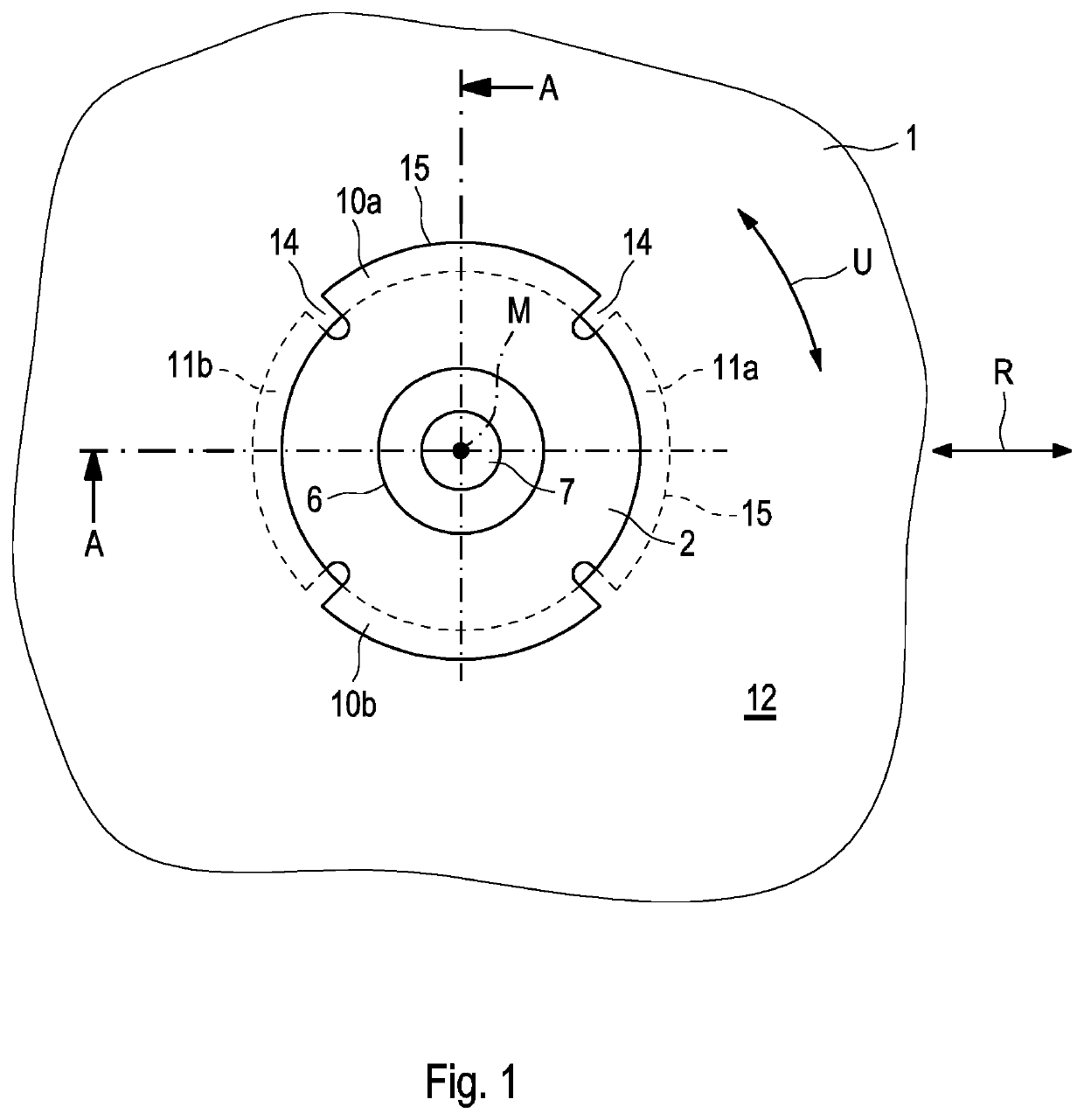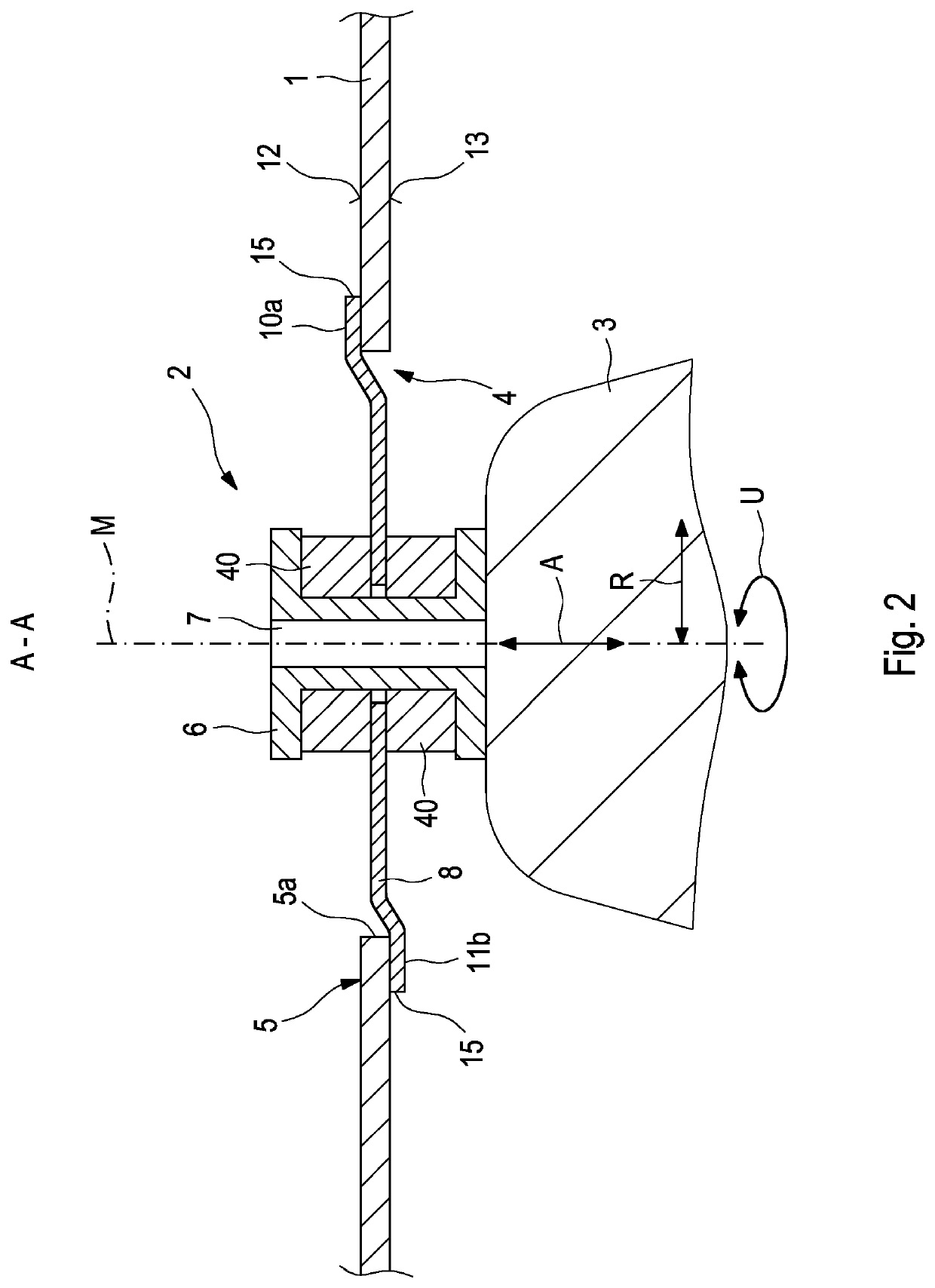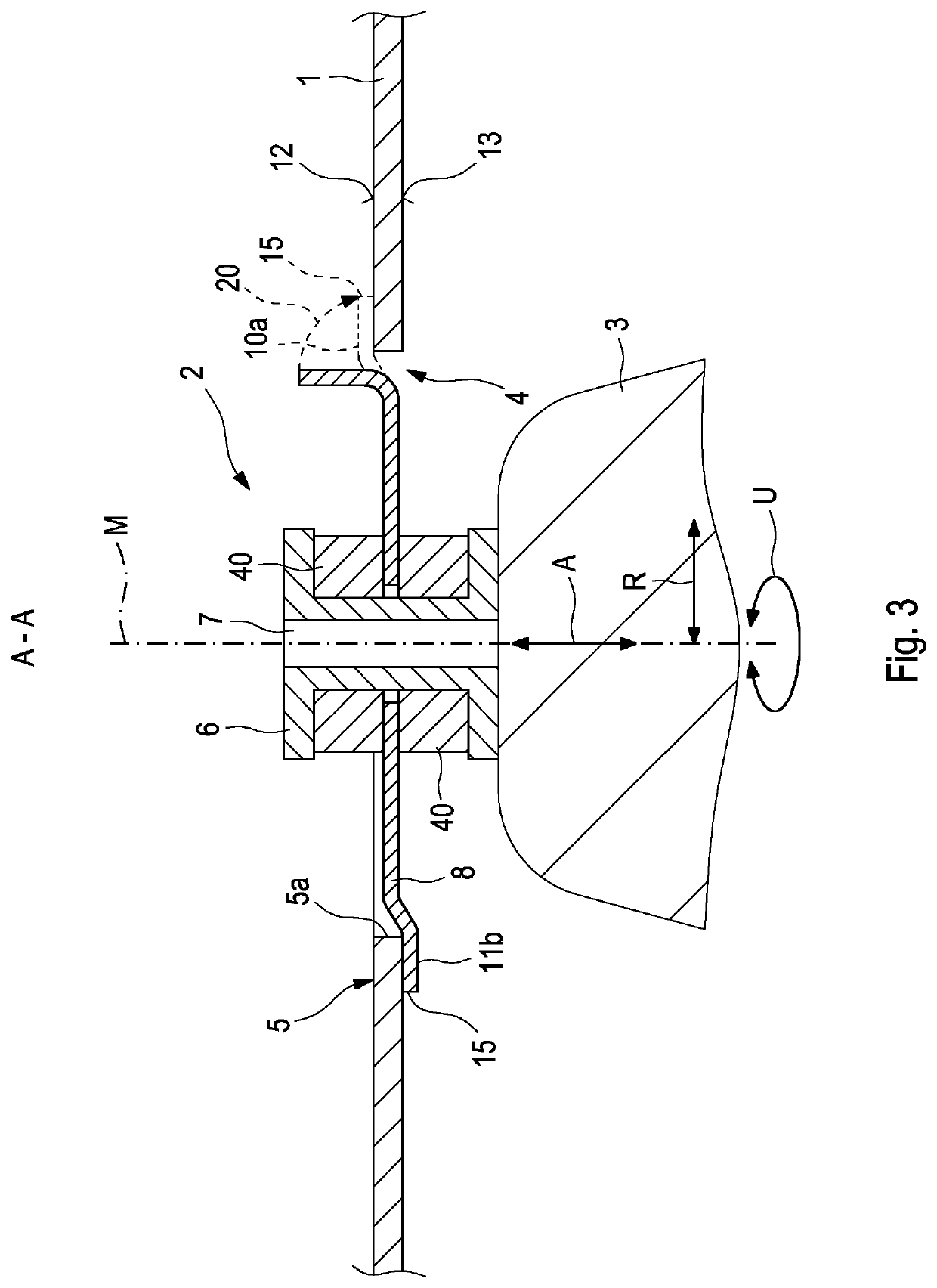Securing device for a decoupling device on a shielding part, decoupling device having the securing device, and shielding part having the decoupling device
a technology of shielding part and decoupling device, which is applied in the direction of mechanical equipment, machines/engines, transportation and packaging, etc., can solve the problems of promoting unwanted corrosion and requiring an undesirably large amount of installation work for the proposed fastening device, and achieves uniform force introduction and advantageous material thickness.
- Summary
- Abstract
- Description
- Claims
- Application Information
AI Technical Summary
Benefits of technology
Problems solved by technology
Method used
Image
Examples
Embodiment Construction
[0025]A first embodiment of the invention will be explained in greater detail below by way of example based on FIGS. 1 through 3.
[0026]A shielding part 1 is usually embodied as a broad one-layer or multi-layer sheet metal layer, e.g. composed of aluminum or steel, in particular stainless steel. Such a shielding part is usually used as a heat shield; for example, such a heat shield is used in automotive engineering in the vicinity of hot components, e.g. exhaust manifolds, catalytic converters, turbochargers, or the like. One object of such a heat shield is to keep radiated heat away from components that are more sensitive to heat exposure in the vicinity of the hot component.
[0027]During operation, in addition to a heat exposure, shielding parts 1 of this kind are usually also subject to a vibration impingement and for the fastening of the shielding part 1, have at least one, but preferably several decoupling devices 2 on a fastening counterpart 3. The fastening counterpart 3 can be...
PUM
 Login to View More
Login to View More Abstract
Description
Claims
Application Information
 Login to View More
Login to View More - R&D
- Intellectual Property
- Life Sciences
- Materials
- Tech Scout
- Unparalleled Data Quality
- Higher Quality Content
- 60% Fewer Hallucinations
Browse by: Latest US Patents, China's latest patents, Technical Efficacy Thesaurus, Application Domain, Technology Topic, Popular Technical Reports.
© 2025 PatSnap. All rights reserved.Legal|Privacy policy|Modern Slavery Act Transparency Statement|Sitemap|About US| Contact US: help@patsnap.com



